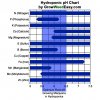BurntByFire
Active Member
I seem to be getting conflicting info????
which is correct for ca?
May plants are having severe ca deficiency and need to know which is best?
6.2 - 6.5
Or
5.5 - 5.8?
which is correct for ca?
May plants are having severe ca deficiency and need to know which is best?
6.2 - 6.5
Or
5.5 - 5.8?
Attachments
-
 5AE9B9A8-00AE-4A05-943D-C1CE96B97159.gif31 KB · Views: 17
5AE9B9A8-00AE-4A05-943D-C1CE96B97159.gif31 KB · Views: 17 -
 3B08CE57-0E9A-448F-B949-8C3362B444C3.jpeg80.9 KB · Views: 19
3B08CE57-0E9A-448F-B949-8C3362B444C3.jpeg80.9 KB · Views: 19 -
 08826288-4473-4737-A64C-C487F2C2B8CA.png279.4 KB · Views: 26
08826288-4473-4737-A64C-C487F2C2B8CA.png279.4 KB · Views: 26 -
 41BBDFE8-4DF9-403E-83BA-B3E025C80223.jpeg1.3 MB · Views: 25
41BBDFE8-4DF9-403E-83BA-B3E025C80223.jpeg1.3 MB · Views: 25 -
 12F92AAD-4A3A-49F3-BB69-DE821948C979.jpeg1.3 MB · Views: 21
12F92AAD-4A3A-49F3-BB69-DE821948C979.jpeg1.3 MB · Views: 21 -
 2B71E267-71F1-4E50-A568-EBA9ABBEB6E3.jpeg1.2 MB · Views: 18
2B71E267-71F1-4E50-A568-EBA9ABBEB6E3.jpeg1.2 MB · Views: 18



